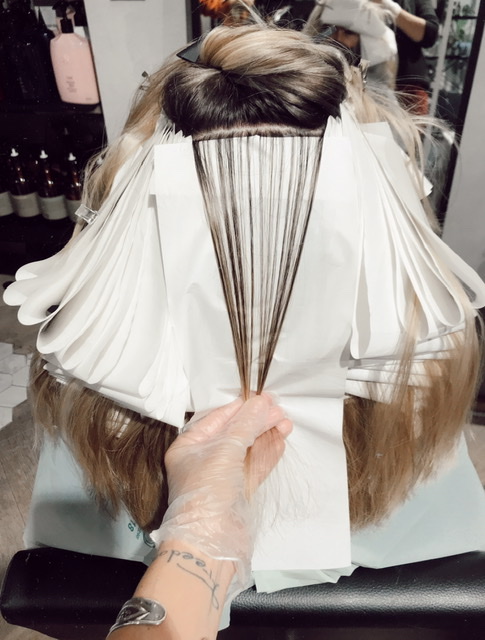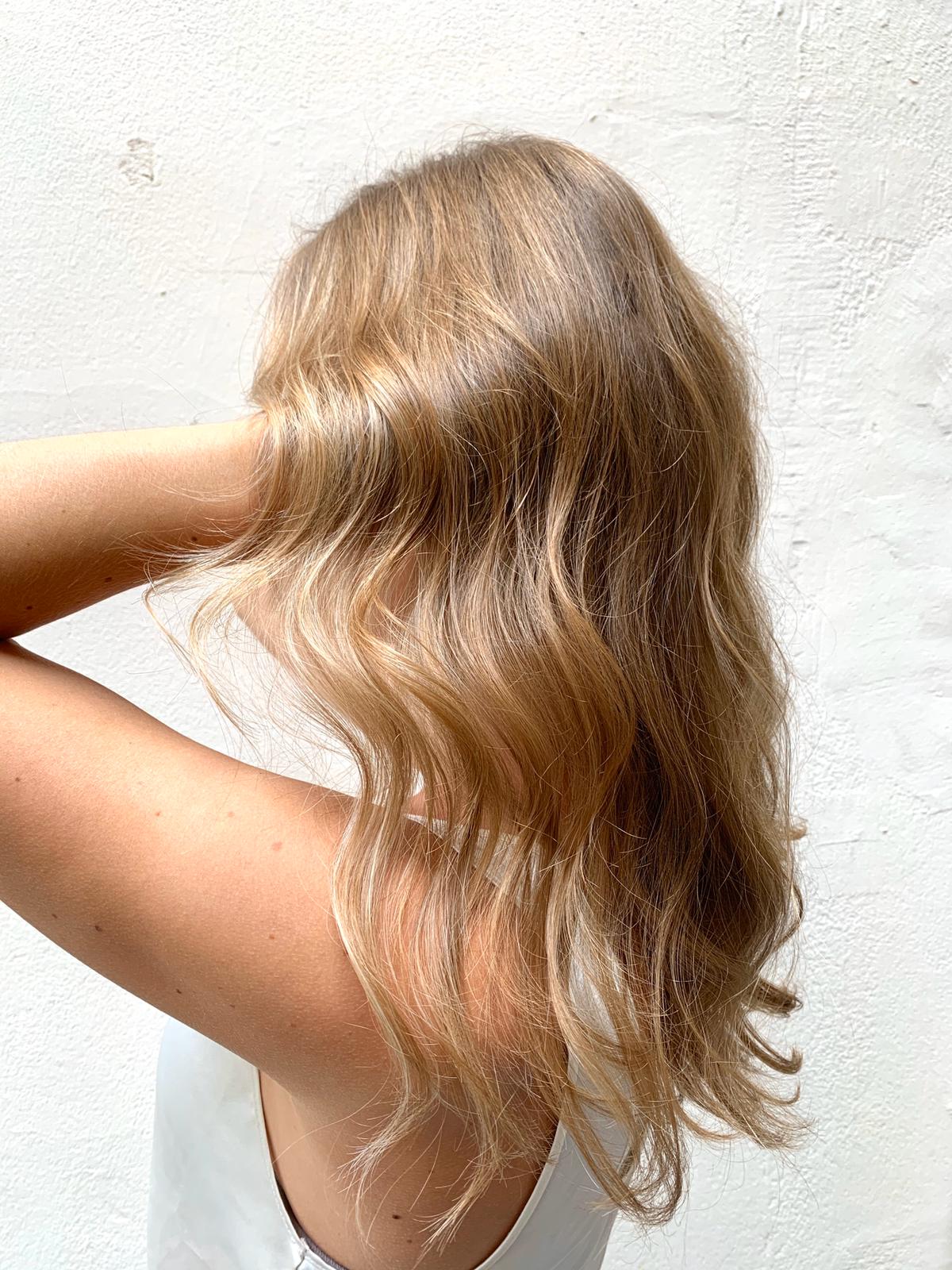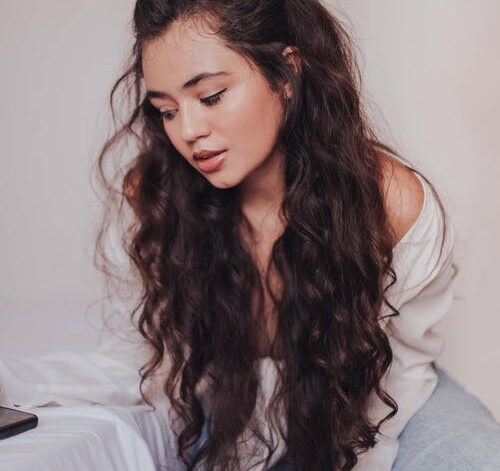This is the ultimate guide to the difference between balayage and highlights. In this post we delve into lightning techniques so you can have a better understanding of what is best for you.
The short answer is that the difference between highlights and balayage is the application technique. Balayage is a French word which means ‘sweeping’, and this is quite literally what balayage is. To sweep the hair, or to paint it in a sweeping motion using the brush and lightener. Traditionally highlights are applied from root to tip in a uniform fashion, usually after weaving the section of hair into the desired thickness.
I will go into greater detail in this post about the different techniques, including baby lights ombré and teasy lights so you can be armed with the knowledge to make more informed decisions about your hair. Remember, the result you desire can often be created using multiple techniques. In the end of the day your stylist will know which technique is best to achieve the result based on many factors discussed in greater detail here.
Highlights
Embed from Getty ImagesJenifer Aniston has turned heads with her hairstyles since ‘The Rachel’ back in the Friends days. The star is usually spotted with traditional highlights. The way we know these are highlights is how the lightener goes from the roots to the ends with an even distribution.
This color is created by taking small slices, usually about 1cm thick and weaving the slice. The color is then applied evenly from roots to ends, or evenly on the regrowth if it is a touch up. Highlights are ideal for anyone who wants to go significantly lighter and is not afraid of maintenance. The reason highlights can be higher maintenance is because of the even distribution on the root area. This creates a line when it grows out, which creates the need for touch ups more frequently.
The frequency with which you will need to touch up the roots depends on the amount of shades you lift your hair. More than 2/3 shades difference will require more frequent touch ups. It also depends on the quantity of highlights you get. More highlights need more frequent touch ups for the same reason. The further your color is from the natural color, the more touching up you will need.
Balayage
Embed from Getty ImagesSarah Jessica Parker pictured above has a balayage. The way you can tell is that she has lightness placed strategically throughout her curls with varying distribution. This creates a sense of dimension and what we could only wish to be a ‘natural’ lightness, as if we were on an extended beach holiday (sigh).
This look can vary from what you see above, which is a partial balayage. Or a full head which has much more lightness but not necessarily from roots to ends. The advantage of balayage is that it is a much more organic application process and the placement depends entirely on your hair cut, length and texture. Often with a balayage the stylist will place extra lightness around the face, which we call the money piece. Balayage is ideal for clients who want around 1-4 shades lift. If you want more than 4 shades lift, balayage is not ideal for you as the larger sections limit the amount of lift one can achieve.
Balayage can last for a long time depending on the placement and your wishes. It is always possible to touch up the money piece and toner in between appointments without having to do the full balayage. For this reason it is perfectly suited to a client who doesn’t want to commit to regular touch ups.
Babylights and teasy lights
Babylights and teasy lights are variations of highlights that are used along side other techniques or as a replacement for traditional highlights. The difference is fractional in application, but it can make a huge difference in the final look.

Teasy lights are highlights which are teased at the root before applying the lightener. The effect that this achieves is a softer line at the root when it’s combed out. This means that the regrowth line will be softer ensuring a smoother grow out. Baby lights are highlights that are weaved extremely thin. The thicker the weave, the more stripy the result. If you are after a very highly blended blonde, baby lights are the answer. Ideal for someone which naturally light hair who wants to enhance and lift the natural color.
Ombré
Embed from Getty ImagesOmbré is different to the rest of the list because it is not a technique, rather a result. Ombré is a fade from dark to light, or light to dark. Traditionally ombré hair color is darker at the root area, usually for about a third of the hair length. The lower two thirds fade into a lighter color, traditionally blonde but of course this is open to any interpretation and is only limited by the imagination.
Drew Barrymore has an ombré in the image above. We know this because the top and bottom are two clear and distinct colors. This is different to the balayage we saw previously which is blended and placed organically.
In conclusion
These techniques can be combined, and in fact most of my colors are a combination of any of the above listed techniques. For this reason the thing to discuss with your stylist is the desired result, not the preferred technique. Your stylist will know what technique to use based on a number of factors. Pictures are great for inspiration, remember that we can never copy a color exactly. The pictures are great as references and ideas, not instructions.
Remember to pin this to your boards so you can come back to it later!



